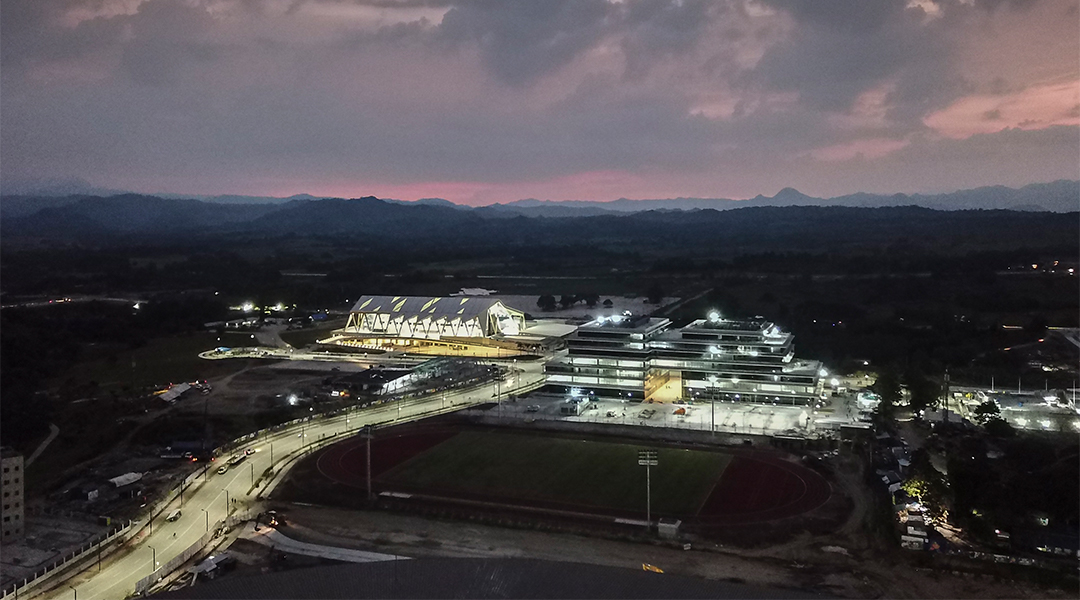
A Glimpse at the Future of New Clark City with BCDA President Vince Dizon
With New Clark City’s Phase 1 marking the first step in the efforts of building a smart, sustainable, green city, the progress of New Clark City has sparked conversations and feedback left and right, both positive and negative. While many are enthusiastic about the new site, others remain skeptical of whether it will live up to expectations and provide optimal solutions in addressing some of the country’s pressing urban problems. Last 12 October, BluPrint visited the site and spoke with Bases and Conversion Development Authority president Vivencio ‘Vince’ Dizon to talk about BCDA’s mega-project.

BluPrint: From your perspective as the chief executive officer, how has the development been?
Dizon: We’ve got this thing done in such a short span of time, a lot of people thought that this was not possible from the get-go. It’s normal that people will think that, it’s quite a challenge, it’s a very difficult process, to begin with, so I don’t blame people for thinking that. It’s not about the compliments, it’s about having our athletes appreciate and value the things that we’ve done and I believe that it’s something that will inspire them better for the country. I think that’s the best feeling, that it gives you a sense of pride, that we can actually build something for everyone.
Let’s talk about “everyone”. Tell us more about the government agencies and how soon they will begin operations. By early next year, you’ll start seeing them move in. There are several agencies like NBI, NEDA, DICT, DOST, as well as disaster response agencies. That’s what’s gonna kick start this new city and we’re very excited about that.
Okay. A lot of the employees will be moving here, working here, that’s why we’re preparing everything especially the transportation systems so that it will be convenient for them to move in and out. This is a new development, so we need to provide the needed services for them to live and work here. Number 1 is transportation and that’s gonna come in the next couple of months.
How about the families of the employees, what if they want to come here, how are you planning to do that? They can buy. Either live here, or through their agencies, or rent in the dormitories, depending on how big the family is. We’ve got 1 bedroom, 2 bedroom, 3 bedroom apartments there, very affordable for government employees. So, they can stay here for a week, come back to wherever they live for the weekend, be with their families. It’s really up to them, so we’re making it as flexible as possible.
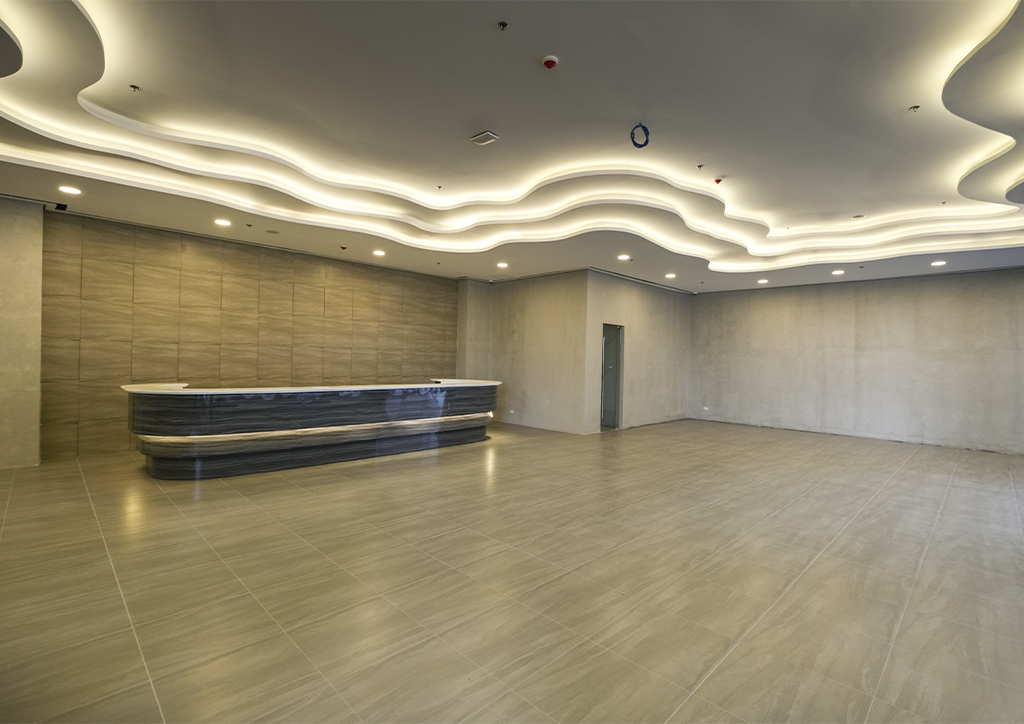
What are your concrete plans regarding transportation? It’s going to be bus rapid transit. The train from Manila to New Clark City will come maybe sometime in 2025, so in between, we’re gonna have to provide bus transportation from Manila to here, from here to Clark, and so on. This is something we’re planning and we’re working on already.
Is the new road getting here to New Clark City ready? Actually, it’s ready but we haven’t opened it yet. We’re still creating it up and making sure that it’s safe. We’ll probably open it up in a week.
How about monitoring and safeguarding the value of the development? Since construction will stop during and a few months after the SEA Games, how are you planning to sustain this entire area while nothing is really, actually happening? First of all, to maintain the integrity of the city – how it will be, make sure it doesn’t get too crowded like Metro Manila, make sure it stays well-planned. We are following very strict Urban Design Standard Guidelines done with our Japanese partners and that’s already in place. Every developer, every builder, needs to keep up with the strict requirements of the UDSG.
As to keep it sustainable, the key is to just build as planned, never build too much, never over plan, I think that’s what we’re trying to do as guided by our master development plan which prescribes certain phases which we want to keep as tight and small as possible, especially in the first phases, and let it grow organically.
We’re starting with the government offices, and then industrial areas will come next, which will ensure that the jobs start coming in. When there are jobs, people start coming in, and they will require housing, they will require facilities, so that’s got to be kept in check. Sometimes there’s always a tendency to over-plan, overbuild, you get too excited, so just make sure you’re following the plan very well and then you make some adjustments.
If after the games, a lot of people get interested and they start buying, then you gotta strike a balance between building and making sure there’s organic growth in the city, which we feel that there will be because, first of all, they’ll probably live in a 20-30 km radius of the sterling, at least 3-5 million people already live in here. When you provide public spaces that are open to everybody, then people will come.
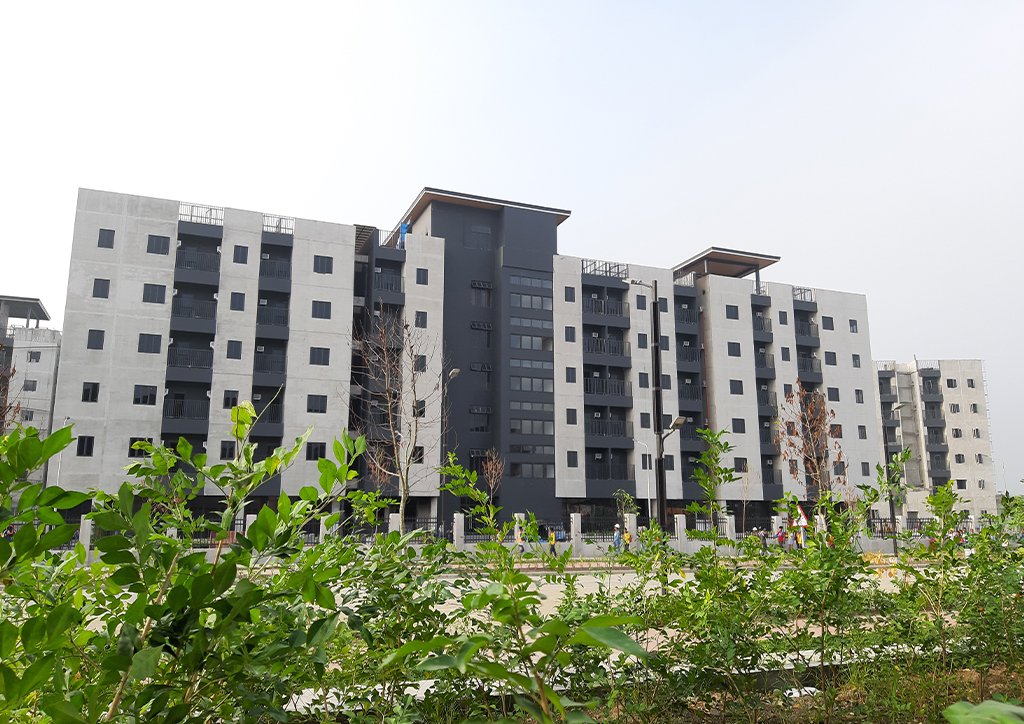
So once tourists and spectators start coming in, how will that affect the locality? Do you have any plans for that? Currently, there’s a lot of opportunities for the locality. First of all, in the construction phase and the development, we employed 10,000 people here and at least 80% of them actually came from this area. That’s a huge opportunity for them. But afterwards, when residents start coming in, jobs start coming in, the tourists start coming in, then, obviously it affords new opportunities for them, but we have to prepare them in terms of giving them proper training, education, skills, to be able to provide the kind of services that we will need later on.
What about the Aetas? A lot of people are concerned since many of them live uphills in Clark. As you noticed in this area, it’s all flat. This is part of the masterplan where we only build the denser developments in the flat areas. So, in the mountains, mostly just eco-resorts are going to be built there. So, if there are some indigenous people who are affected in those areas, they will be adequately assisted, compensated. This is all government land, including the mountains. Our Aeta brothers and sisters they have what they call ancestral domain land and the ancestral domain land is further south. The entire New Clark City including the mountains is not covered by the ancestral domain. So it’s all public government land, but nonetheless, if there are any individuals or families affected, they need to be adequately protected, compensated, and given kinds of opportunities that an inclusive city like this should provide. They should be the ones to first benefit from this, in fact, in this development, there are at least 500 Aetas who have been employed here.
Really? Yes. We employed them directly and we feel that they can benefit a lot from the developments here and also, it prevents them from engaging in very destructive livelihood. Typically, the Aetas here, their main source of livelihood is slash and burn, they cut the trees, they burn the trees, then they make charcoal and they sell that for like 150-250 per sack, not only is it’s not gonna be able to sustain their families but it’s also very destructive to the environment, so we wanna try to educate them, and give them opportunities so that they don’t have to do those things.
Which government agency is working on concerns with regards to the Aetas? The National Commission on Indigenous Peoples, the NCID, which we work very closely with. We wanna make sure that we are very sensitive with regards to the situation of our indigenous peoples and we wanna make sure that they’re well taken cared of. But like I said, this is all government land. We are not going to build on ancestral domains. But, if there are some affected families, we will address their needs and we will try our best to mitigate all those effects.
What about your plans on making this a “green city”? We have a biodiversity road map that was done by the Asian Development Bank. They surveyed all the plants, all the flora and fauna here and they’ve given us the report. That’s our guide to ensuring sustainability moving forward. The kinds of trees we plant, the trees that you see along the roads, those have all been studied well, they’re all endemic species.
There’s actually a nice anecdote. Here in the Riverpark, we were supposed to build this amphitheater. However, we found that there’s this rare species of woodpecker inhabiting so we had to move our amphitheater somewhere else. That’s just some example of how important it is to us to keep the river intact, making sure the trees are preserved, which is why educating our Aetas is very important to us. We really gotta make sure.
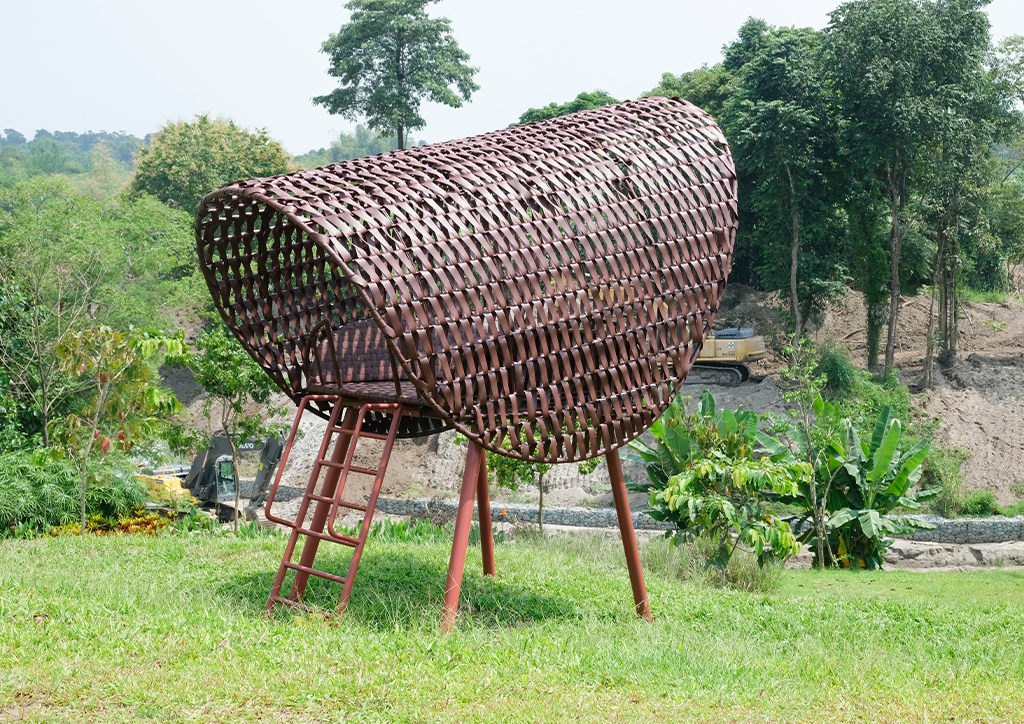
How are you managing your security and what are your plans on crowd control especially during the SEA Games? We’re going to be very secure here. The PNP and AFPP are here, there’s a military camp 1 km away. We’re very thankful to our PNP really providing us with so much security, and it’s great. Everybody’s gonna feel safe to enjoy the competitive atmosphere that’s gonna be here in the next couple of weeks.
You might like Athletic Stadium 100% complete 50 days before the SEA Games
What would you consider to be your best investment? I think Phase 1 by itself is a great investment. Phase 1 had a price tag of about 13 and a half billion pesos, including the roads. It’s a great investment because when you build infrastructure and when you build facilities such as this, it adds value not only to the property itself but it adds value to the entire local economy. Capas was once a sleepy town, nothing was going on here, but now, people from the media are here, the whole world is watching.
Okay. It’s the best investment because it brings a lot of economic, positive economic effects. It will grow the economy, it will improve people’s lives, make people travel easier because of the new roads, obviously our athletes, with these facilities, we’ll be able to build new schools, on Wednesday we will be looking at the new site of the Philippine National High School for Sports, which is something that’s never happened before. Now that we have all of these, we can build them.
What are the updates regarding the six more buildings to be built before 2022? Well, initially we’re going to build the central bank mint and then the Supreme Court. The others, we’ll have to check, so many agencies have already approached us – DPWH, DENR, Department of Agriculture, everybody wants to locate at least their satellite offices here in the next couple of years. We’ll just have to plan it well so we’re still being truthful to the masterplan and making sure we’re not overbuilding, that’s the key always.
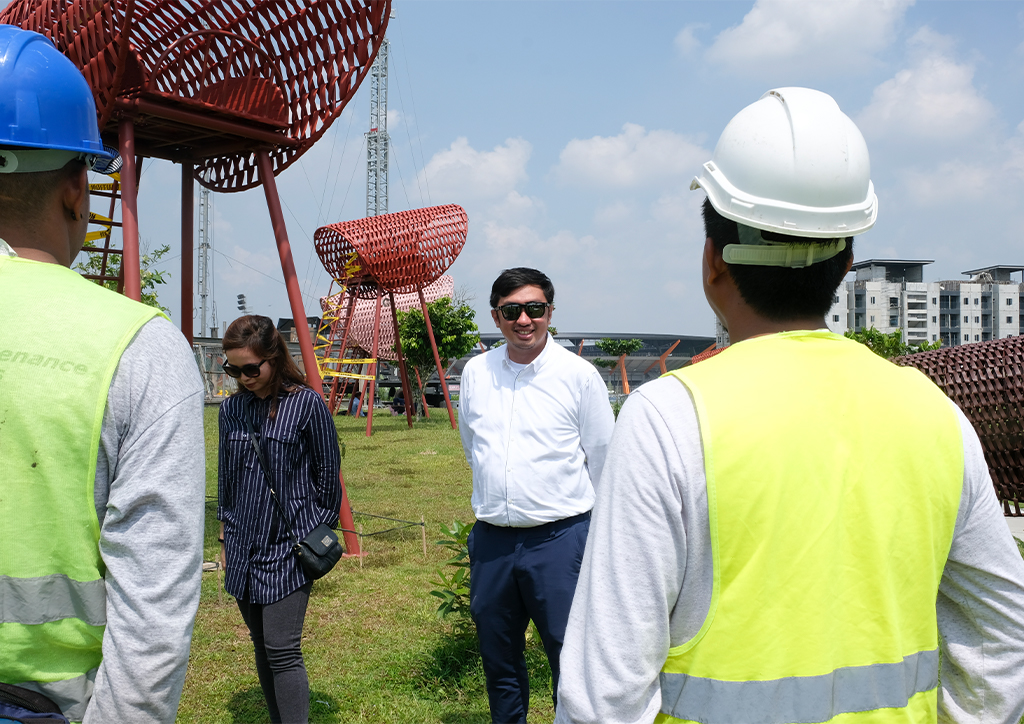
Has everything been tested already or are there still a few things needed to oversee? We still have to test the rooms in the Athlete’s Village. Typical testings like the faucet, the flush, the toilet, the floor drains, make sure they’re not clogged, just those small things. But for the sports facilities, everything has already been tested.
Will BCDA still be staying here after the SEA Games? Yes, of course. This is BCDA’s property, this is under our stewardship, we have to take care of this, it’s one of the few remaining places where people can actually live a pretty good quality of life.
READ: Making a Splash: Aquatic Center is competition-ready for the upcoming SEA Games
The key will be the maintenance of these facilities and operations. That’s the most important. We’ve said several occasions already that we will privatize these facilities, the operations and maintenance will be privatized so that we can make sure that they’re maintained well and we can maximize the revenue potential of these facilities. so that. Maintenance entails a cost, and to recover the cost you need to make money, you need to get revenue, and the best way to do that is to privatize. The government doesn’t really know how to do that and we don’t really do a really good job in maintaining. We have to privatize, that’s what I’m concerned about and that’s what I’ll ensure very soon.
Do you plan on expanding? Well yes, this is like Phase 1 to like Phase 5, it’s never-ending. In the next few years, I’m sure that whoever will be in charge, they’ll continue.
READ MORE: BCDA Pres tackles USD 5 billion New Clark City, white elephants
Photographed by Ed Simon


